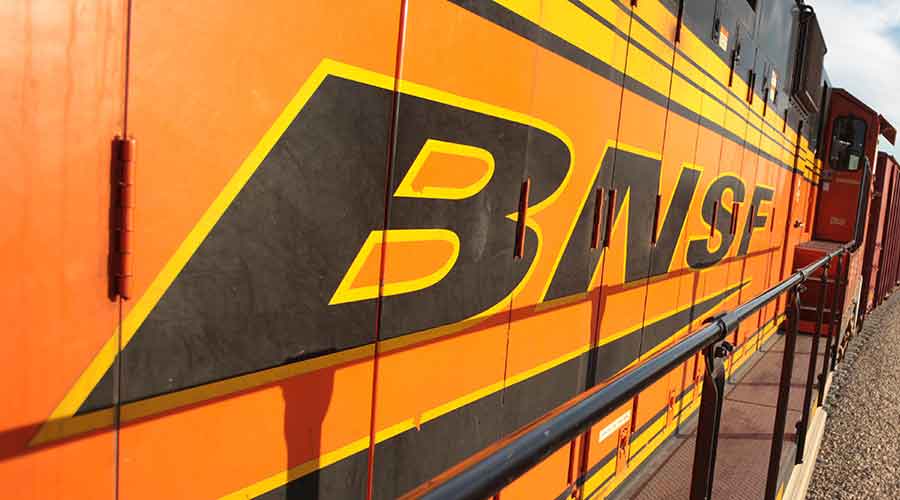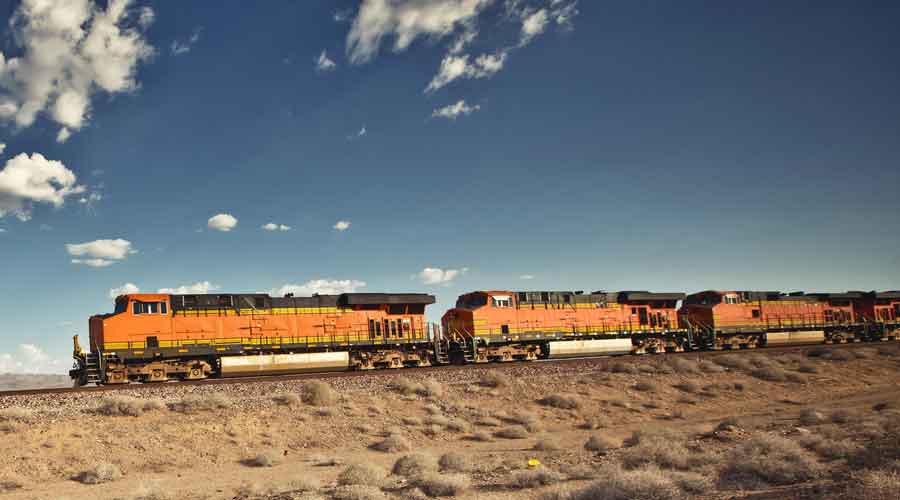Stay updated on news, articles and information for the rail industry
8/8/2022
Rail News: BNSF Railway
Q2 a mixed bag for BNSF with higher revenue, lower volume

In the second quarter, BNSF Railway Co. boosted revenue 14% to $6.6 billion and increased operating income 7% to $2.4 billion compared with second-quarter 2021 figures.
However, volume decreased 6% to 2.47 million units, operating expenses shot up 19% to $4.3 billion and the operating ratio climbed 2.8 points to 63.2, according to the Class I’s Q2 financial performance summary.
Despite the volume slip, average revenue per car/unit rose 22% year-over-year to $2,542 because of increased rates per car and higher fuel surcharge revenue driven by higher fuel prices, BNSF officials said in the summary. The railroad’s fuel costs in the quarter nearly doubled on a year-over-year basis to $1.28 billion as the per-gallon price of diesel ballooned 89%.
Financial results by commodity groups show consumer products revenue jumped 18% to $2.45 billion, but volume declined 7% to 1.38 million units due to less international intermodal shipments resulting from supply-chain challenges, BNSF officials said. The volume dip partially was offset by an increase in domestic intermodal units and higher automotive shipments.
Meanwhile, agricultural products revenue rose 9% to $1.4 billion while volume decreased 3% to 303,000 units. The Class I moved more carloads of renewable diesel and oil feedstocks, but fewer grain exports in the quarter.
In the industrial products sector, BNSF registered an 8% increase in revenue to $1.46 billion and a 4% decline in volume to 421,000 units.
“Volume decreases in [both] the second quarter and first six months were primarily due to a decrease in petroleum related to lower demand for shipments of crude by rail, with the decrease in the first six months partially offset by increased volumes in other product categories,” BNSF officials said.
The railroad scored its best Q2 financial result with coal, for which revenue skyrocketed 30% to about $1 billion even though volume dipped 3% to 373,000 units. Through 2022’s first half, electricity generation increased, natural gas prices climbed and coal export demand improved, BNSF officials said.


 LRW Honors Amtrak’s Acheson As Railway Woman Of The Year
LRW Honors Amtrak’s Acheson As Railway Woman Of The Year
 From Editor-In-Chief Foran: Of Gender Equity And Inclusion
From Editor-In-Chief Foran: Of Gender Equity And Inclusion
 Spotlight On Some Of Today’s Rail Safety Products
Spotlight On Some Of Today’s Rail Safety Products
 Women of Influence in Rail eBook
Women of Influence in Rail eBook
 railPrime
railPrime







